SHRM Report: Examining Tacit and Explicit Knowledge in Organizations
VerifiedAdded on 2022/11/13
|5
|1143
|79
Report
AI Summary
This report delves into the concepts of tacit and explicit knowledge, as defined by Michael Polanyi, and their significance in Strategic Human Resource Management (SHRM). Tacit knowledge, which is difficult to articulate, is crucial for organizational decision-making and collective behavior, while explicit knowledge, which is easily documented, is essential for data management. The report provides examples of organizations like Buckman Laboratories, Ernst & Young, and Accenture that effectively utilize both types of knowledge. Buckman Laboratories uses online forums for tacit knowledge sharing among sales agents, while Ernst & Young and Accenture focus on codifying and reusing explicit knowledge to improve best practices. The report highlights the importance of knowledge sharing through various tools, including face-to-face meetings, virtual platforms, and social networking sites, and emphasizes how these practices contribute to organizational success. The report concludes by emphasizing the need for organizations to manage both tacit and explicit knowledge effectively to drive innovation and maintain a competitive edge.
1 out of 5
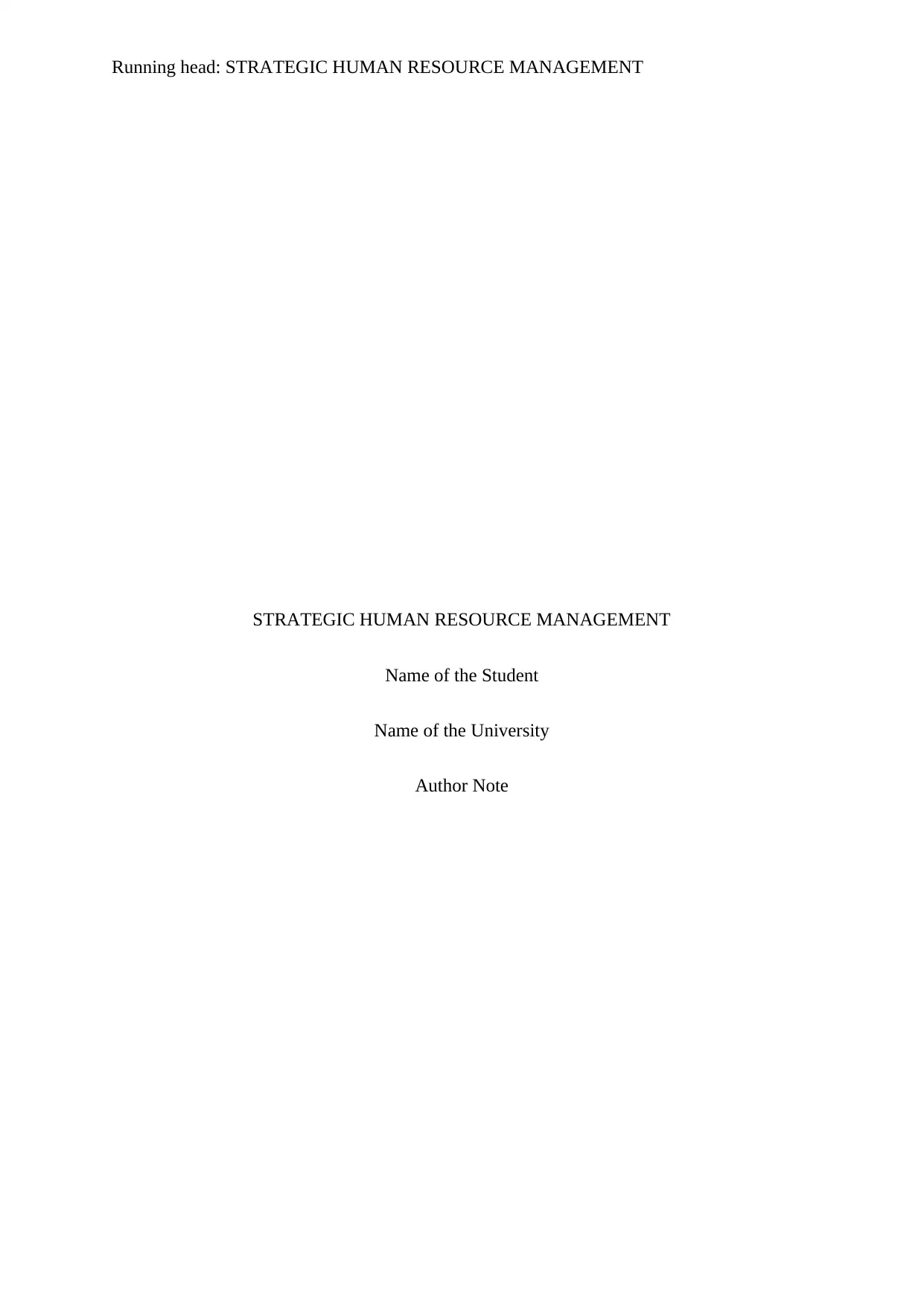
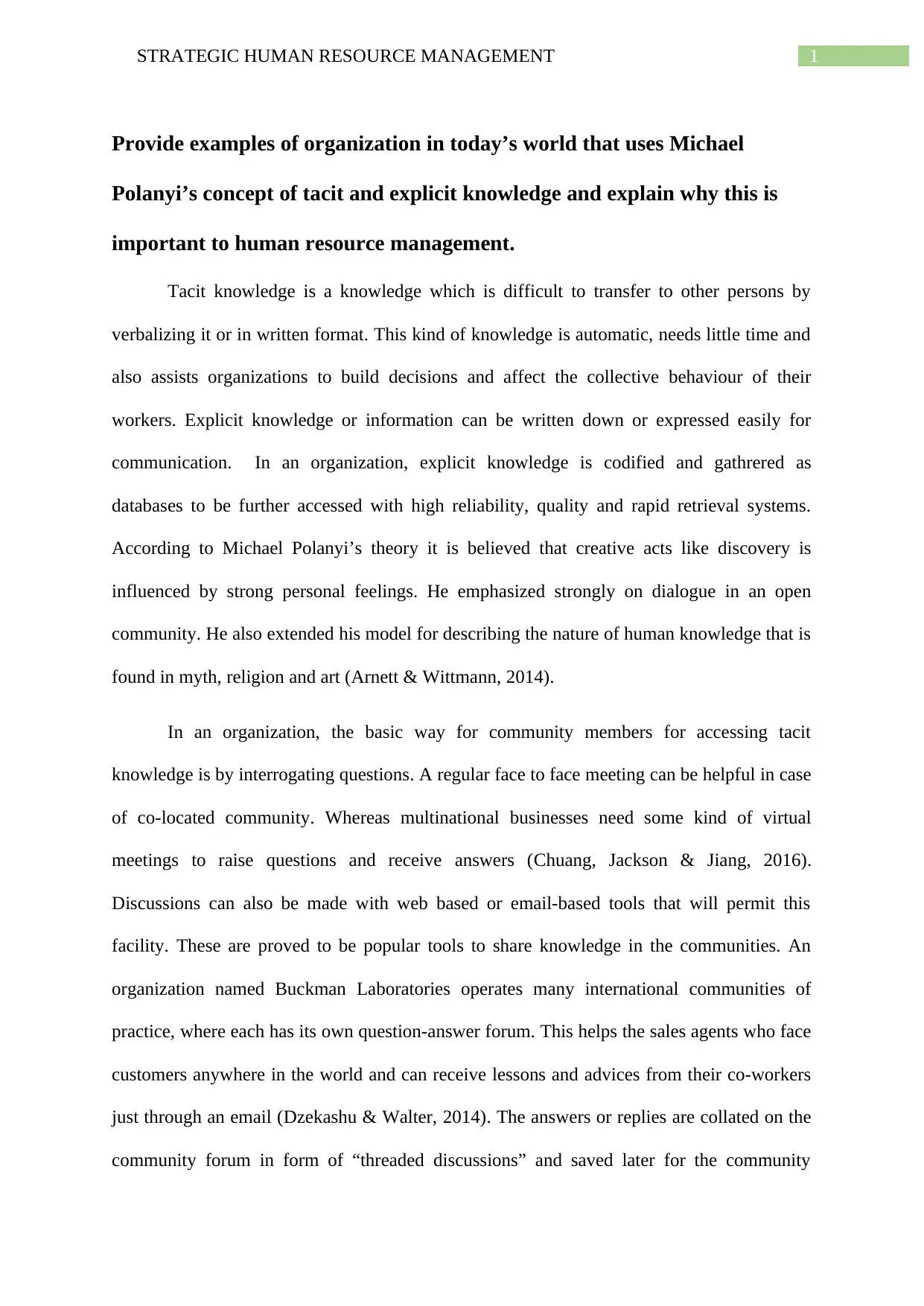
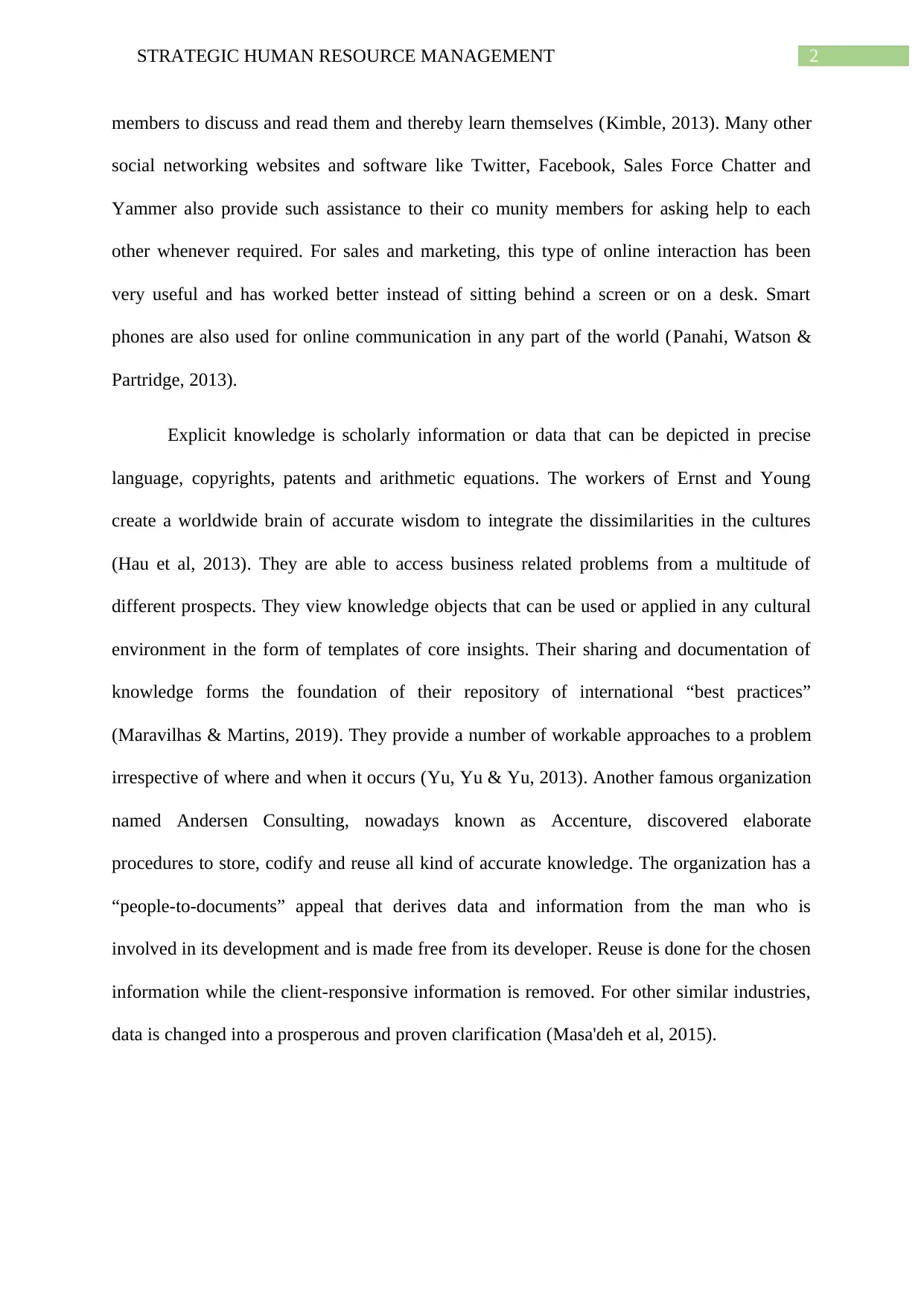

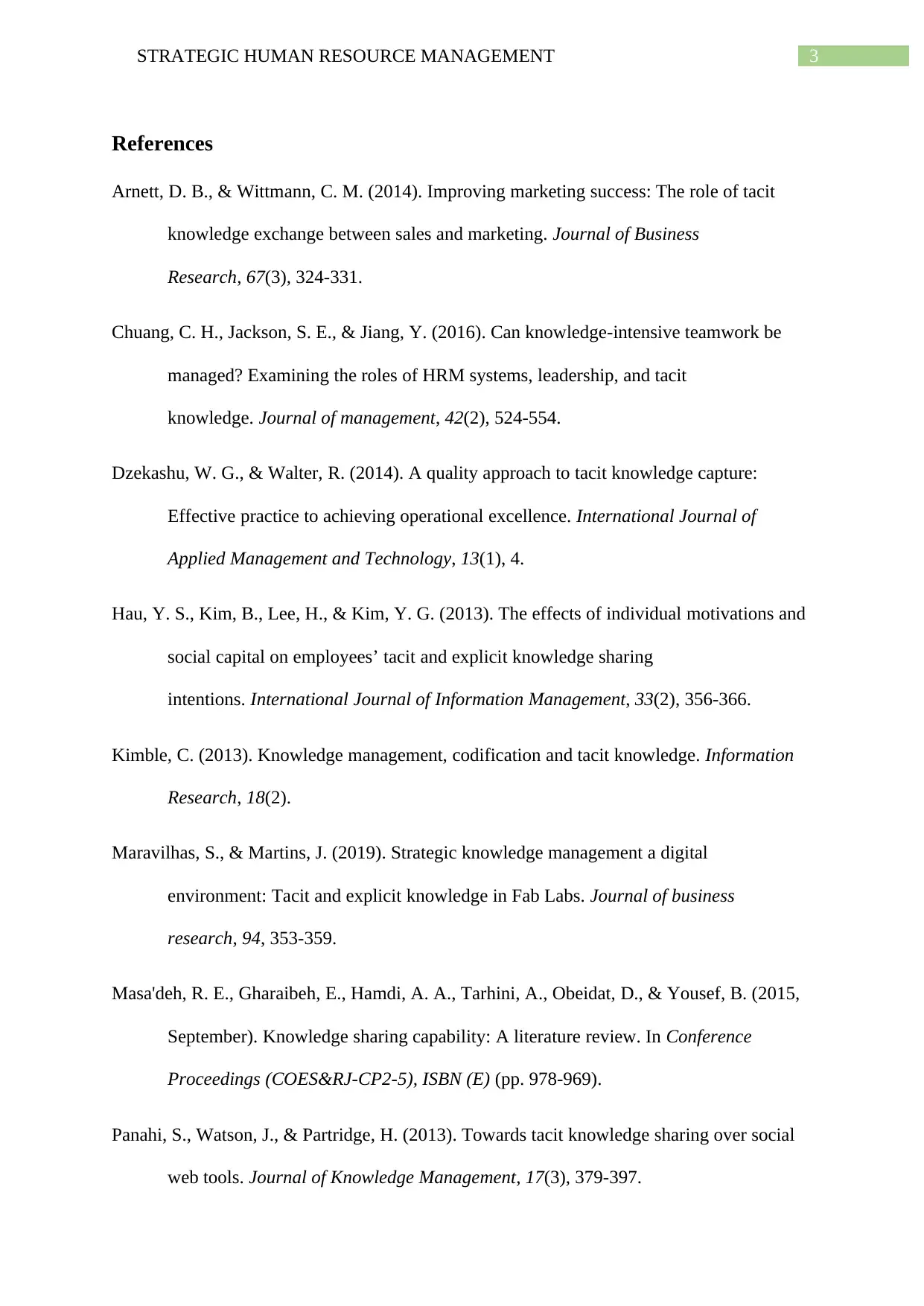
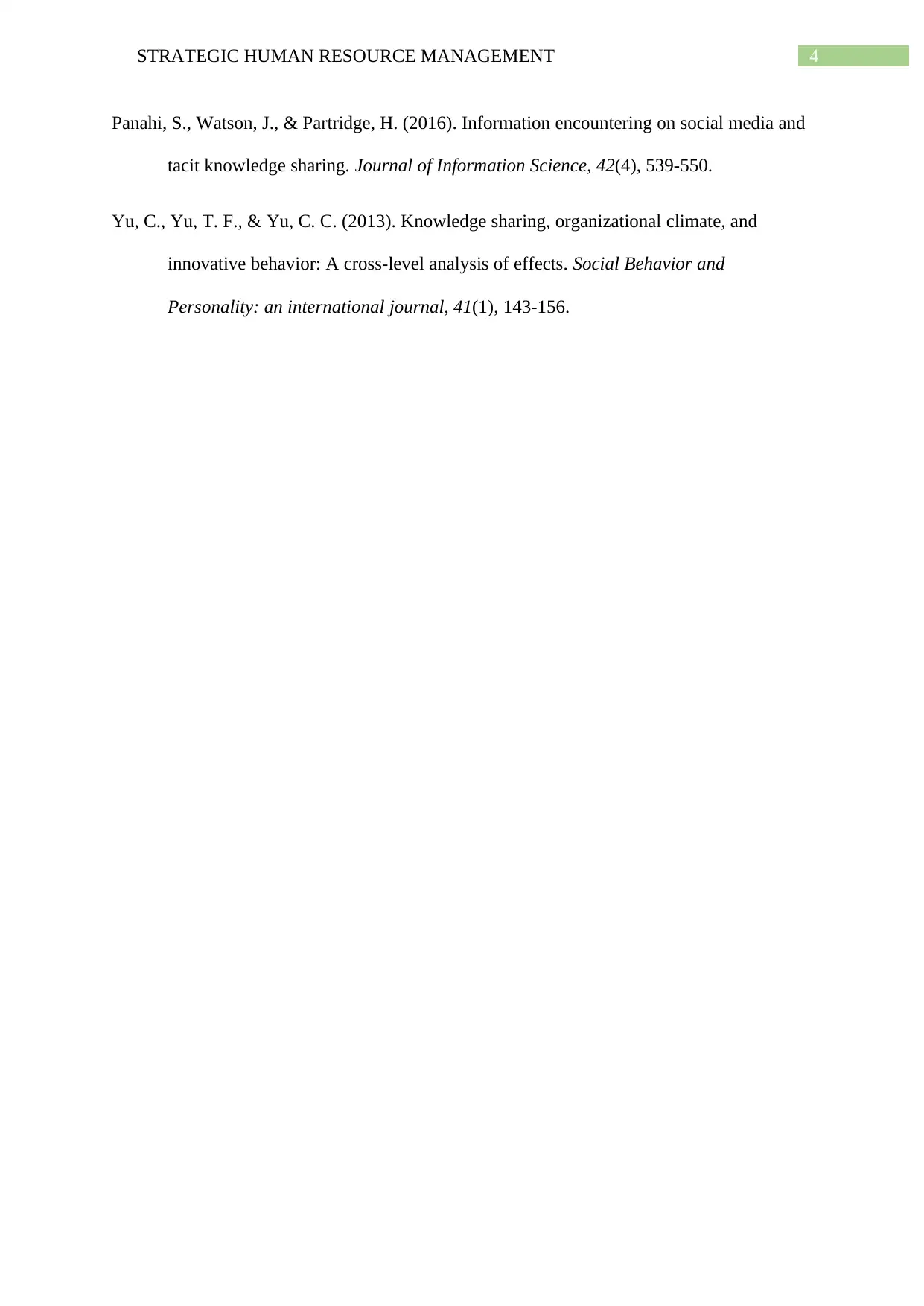





![[object Object]](/_next/static/media/star-bottom.7253800d.svg)